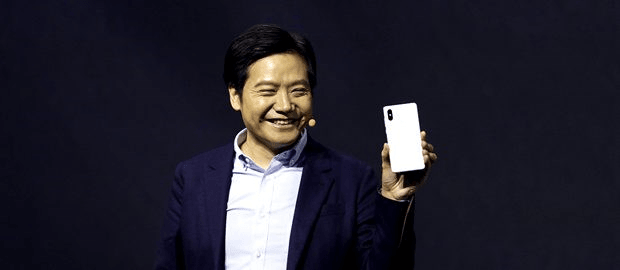
Chinese smartphone brand Xiaomi, which is making debut in Europe, earned 4.4% of sales market share in five major European markets in Q1 2018, ranking No.4, according to latest smartphone OS data from Kantar Worldpanel ComTech.
The top three brands in the big five European markets, Samsung, Apple, and Huawei, made up 71% of smartphone sales in the latest quarter, but it is still very impressive for the newcomer Xiaomi to quietly take the fourth spot. Its growth has come predominantly from just two markets, Spain and Italy. It is also worth mentioning that these were also the markets that another Chinese brand Huawei had conquered first in Europe.
According to media reports, Xiaomi is scheduled to go public in Hong Kong this July and expected to raise as much as US$10 billion in the IPO. It plans to use 30% of the proceeds to fund for its overseas expansion, said its prospectus.
Dominic Sunnebo, Global Director for Kantar Worldpanel ComTech, comments: “Despite being a household name in China and India, Xiaomi has turned its attention to Europe late, and it has quickly proven to be a worthy opponent.
In Asia, Xiaomi’s business model has been focused online and while this remains an important factor in its European model, it is local partnerships with key players like Media Markt, Media World and Carrefour that has allowed it to accelerate sales so quickly.”
On Xiaomi’s home turf of China, it is also the best performing brand in Q1: in urban China, its market share grew 7 percentage points from a year ago to reach 17.9%.
Kantar Worldpanel ComTech carries out monthly panel surveys among Chinese urban mobile phone users to monitor the market share changes of various brands. In China, the panel size is 22,000.
Panelists were recruited from tier-1 to 5 cities and each year more than 260,000 surveys were conducted. The nature of the research methodology means it can cover the influence of smartphones sold in other countries ended up in China and avoid the confusion caused by unsold phones stocked at warehouses of distributors.
In Q1, urban Chinese consumers’ loyalty towards smartphone brands continued to decline: it had slid to 26.6 in the three months from 28.3 a year ago. People are considering more features of a phone when buying a new one – it reached a record high of 4.5 per person, compared with only 3 in the same period of 2015. Among them, “reliability” has overtaken “screen size” and “quality of camera” to become the highest priority for Chinese consumers.
In fact, this trend will be music to Apple’s ears, because our survey has shown that Apple enjoys the highest satisfaction rating among Chinese consumers for “reliability”. For Android brands, Huawei is the highest in this aspect.
This could partly explain why iPhone X is not only Apple’s best-selling model in China but also the best-selling model among all smartphone models in Q1 2018. This has fuelled iPhone’s market share to 22.1%.
Back to Europe, with Huawei’s entry to the US market effectively blocked by the government, the business has increased the focus and resources it is aiming at Europe. Despite the well-reviewed Huawei P20 flagship not being released until April, the results are already showing.
Huawei has managed to significantly increase its presence across the big five European markets and it now holds almost a fifth of sales in the three months to March 2018 – 19.0%, up from 14.4% a year earlier.
“Most encouraging for Huawei are the signs that progress is finally being made in Great Britain, with share rising to 5.9% – it needs to conquer this market if it’s going to realize its ambition of becoming a premium choice for consumers,” Dominic said.
In the United States, Apple and Samsung have managed to eke out year-on-year share gains, up 0.1 of one percentage point and 1.4 percentage points respectively. Google has achieved its highest ever quarterly sales share of 3.4%, up from 1.7% a year earlier, thanks to the success of its Pixel line. ZTE, also under pressure from the US government, saw its sales share fall to 2.5% in the latest quarter.
In the US and the European top five markets, iPhone 8 sold in marginally higher numbers than the flagship iPhone X, indicating that as early iPhone X demand is fulfilled, the price difference between the two devices is playing a notable role in consumers’ choices.
Find out here what Xiaomi reveals in its IPO filing.
This post was originally published on Kantar.com.